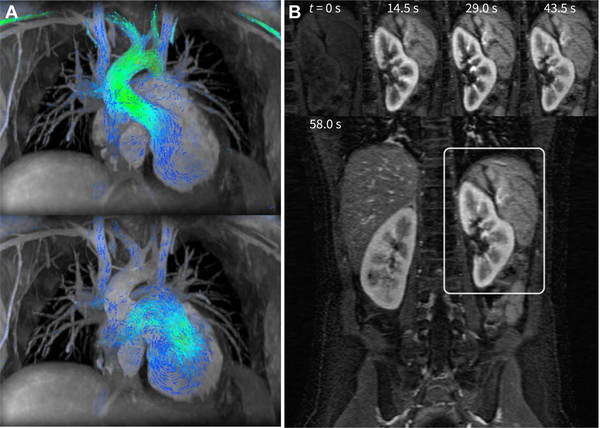Fig. 1.
Example clinical applications of compressed sensing. In A, two cardiac phases of the cardiac-resolved volumetric velocity MRI (4D flow) are shown for the purpose of congenital heart defect evaluation. To enable a clinically feasible scan duration of 5–15 minutes while maintaining high spatial (0.9 × 0.9 × 1.6 mm3) and high temporal resolutions (22.0 ms), a subsampling factor of 15 was used [9]. In B, high spatial (1 × 1 × 2 mm3) with a 14.5-s temporal resolution was achieved for a dynamic contrast enhanced MRI using an acceleration factor of 6.5 [10]. High spatiotemporal resolutions are required for capturing the rapid hemodynamics of pediatric patients.

